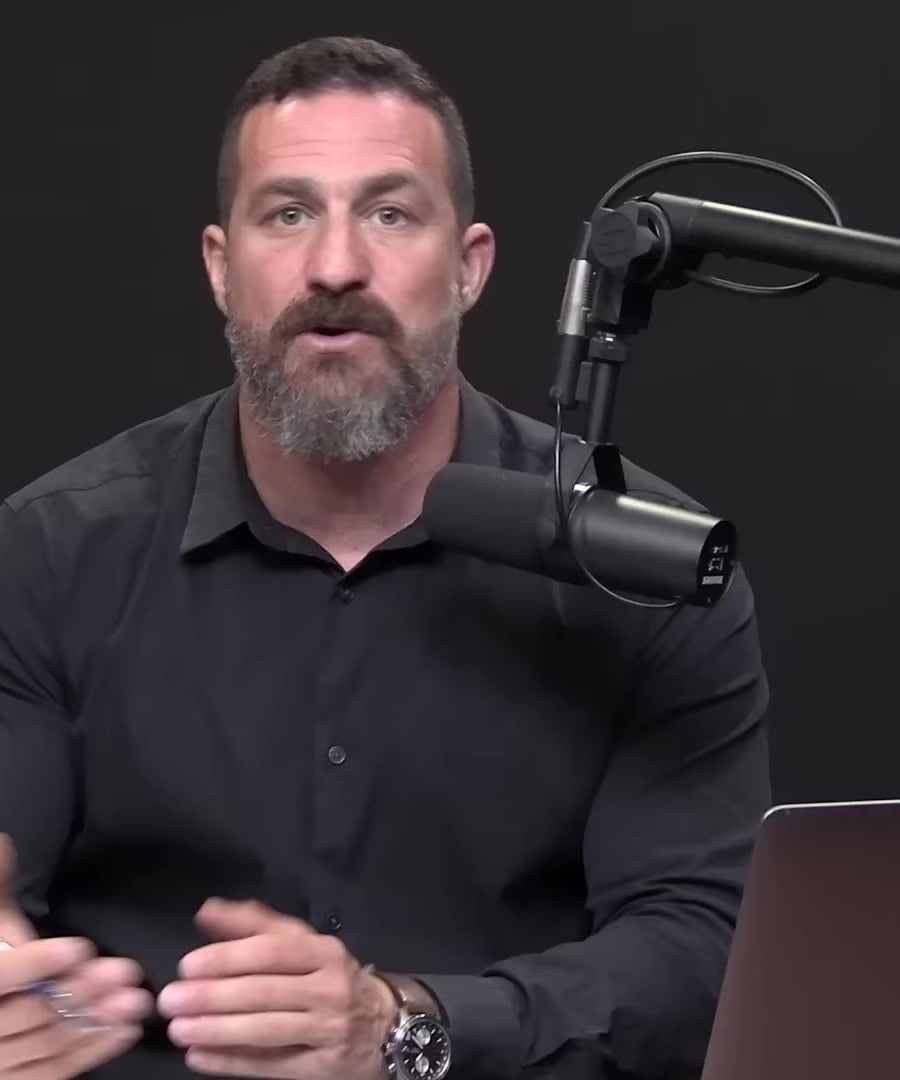what are the recommendations by DR. Galpin about how to structure a training plan?
Sources:
Dr. Andy Galpin provides comprehensive recommendations on how to structure a year-round training plan, emphasizing the importance of varying the training focus throughout the year to achieve optimal fitness results. Here is a summary of his main points:
-
Hypertrophy Phase (January - March): Focus on building muscle mass through weight training. This period is crucial for laying down the muscular foundation for later phases.
-
Fat Loss Phase (April - June): Shift focus to fat loss, incorporating more cardio and high-intensity interval training. This helps in shedding any extra fat accumulated during the hypertrophy phase.
-
Speed and Agility (July - September): Concentrate on speed and interval work. This phase includes activities that require burst movements and help improve overall agility and athletic performance.
-
Endurance Training (October - December): End the year with endurance training, focusing on improving cardiovascular fitness and stamina. This can include longer sessions of moderate-intensity activities like running or cycling.
Dr. Galpin suggests that this structured approach can be adapted based on individual needs and fitness levels, and highlights the importance of adjusting the training focus based on personal goals and results from regular fitness assessments 1 2.
This rotational approach not only prevents the plateau effect often seen in training but also covers all aspects of fitness—strength, endurance, speed, and body composition—over the course of the year.
RELATED QUESTIONS-
Who are other experts on training plans?
Sources:
Here are some experts who provide insights on training plans:
-
Dr. Martin Gibala: A muscle physiologist and professor at McMaster University, renowned for his research on the health benefits of high-intensity interval training (HIIT).
-
Jeff Cavaliere: A physical therapist and Certified Strength & Conditioning Specialist, known for his role as the coach for the New York Mets during their 2006 National League championship season. He also educates on science-based training protocols.
-
Ido Portal: Recognized as a leading expert on human movement, he has developed a comprehensive method referred to as “The Ido Portal Method” focused on improving movement and functional fitness.
-
Dr. Duncan French: Vice President of Performance at the UFC Performance Institute, Dr. French is a performance specialist with a significant focus on training elite athletes.
These experts incorporate their specialized knowledge to form training advice that covers a range of focuses, from high-intensity workouts to functional movement and specialized athletic training.
RELATED QUESTIONS-
based on all above mentioned experts how can I incorporate their knowledge into the optimal training plan for me that incorporates cardio and strength training
Sources:
To create an optimal training plan that incorporates both strength training and cardio, integrating the insights from various experts can enhance both performance and health. Here's a synthesized approach based on their expert advice:
General Template for Overall Fitness
- Foundation: Establish a foundational fitness protocol that can be customized to individual needs, addressing endurance, strength, flexibility, hypertrophy, and aesthetic changes. This framework allows for adjustments based on personal goals—whether to increase strength, muscle size, or endurance 1.
- Balancing Strength and Cardio: A practical split could be 60% strength training and 40% cardio. This may translate into strength training on three days (e.g., Monday, Wednesday, Friday) and cardio on two days (e.g., Tuesday, Thursday) of the week. This setup helps balance muscle mass growth with cardiovascular health without compromising either 2.
Specific Recommendations
- Strength Training: Focus on resistance training using weights, body weight exercises, or resistance bands. The intention is to enhance muscle growth and strength.
- Cardiovascular Training: Incorporate activities like running, cycling, or swimming, ideally on separate days from intense strength training to minimize fatigue and maximize performance. For a balanced routine, integrate cardio at the end of strength training sessions if performed on the same day, to avoid impacting the strength training intensity 3.
Additional Insights
- Science-Supported Tools: Use science-backed tools to enhance both strength and cardiovascular training efforts. This could involve incorporating latest insights on effective exercise routines, recovery periods, and nutritional advice that supports your training goals 4.
- Recovery and Adaptation: Pay attention to recovery, ensuring it is a part of your routine to prevent overtraining and to facilitate muscle growth and cardio fitness improvements 5.
Monitoring and Adjusting
- Assessment: Continually assess your fitness improvements and adjust your training regimen based on what aspects you need to develop further, whether it's strength, endurance, or specific body aesthetics. Identify which areas are lagging and adjust your focus accordingly, perhaps by altering the intensity, duration, or type of exercises 6.
This plan leverages a mix of expert advice to create a well-rounded and personalized fitness regimen. Always consider your health status, consult with professionals as needed, and adjust based on personal progress and goals.
RELATED QUESTIONSCan you provide more detailed workout planning tips?
Currently, there are no specific clips from the Huberman Lab that delve deeply into detailed workout planning. However, using general principles mentioned in previous discussions, we can craft a structured approach:
Weekly Plan Structure
-
Monday (Strength Focus - Upper Body):
- Bench Press: 3 sets of 8-12 reps
- Pull-ups: 3 sets of 8-12 reps
- Shoulder Press: 3 sets of 8-12 reps
- Bicep Curls: 2 sets of 12-15 reps
- Tricep Extensions: 2 sets of 12-15 reps
-
Tuesday (Cardio Focus):
- 30 minutes of interval training (e.g., cycling with alternating speeds)
- 15 minutes of steady pace running
-
Wednesday (Strength Focus - Lower Body):
- Squats: 3 sets of 8-12 reps
- Deadlifts: 3 sets of 8-12 reps
- Leg Press: 3 sets of 10-15 reps
- Calf Raises: 2 sets of 15-20 reps
-
Thursday (Cardio Focus):
- 30 minutes of HIIT (High-Intensity Interval Training)
- 10-15 minutes of cool-down pace (light jogging or brisk walking)
-
Friday (Strength Focus - Full Body and Core):
- Compound movements (e.g., Clean and Press): 3 sets of 8-10 reps
- Plank: 3 sets of 30-60 seconds
- Abdominal Crunches: 3 sets of 15-20 reps
-
Saturday and Sunday: Recovery or active rest days (e.g., light yoga, stretching, or a leisurely walk).
Additional Tips
- Variability: Rotate exercises every few weeks to target muscles differently and prevent plateaus.
- Intensity Adjustments: Gradually increase weights or add more reps as you grow stronger.
- Recovery: Ensure adequate sleep and consider incorporating techniques like stretching or foam rolling on rest days.
- Nutrition: Fuel workouts with a balanced diet rich in proteins, carbohydrates, and healthy fats to support recovery and energy levels.
Remember, consistency and progressive overload are key to seeing continuous improvements. Adjust the workout based on your progress and any physical feedback from your body.
Thank you for your feedback!RELATED QUESTIONS-
what are the recommendations by DR. Galpin about how to structure a training plan?
- RELATED QUESTIONS
Who are other experts on training plans?
- RELATED QUESTIONS
based on all above mentioned experts how can I incorporate their knowledge into the optimal training plan for me that incorporates cardio and strength training
- RELATED QUESTIONS
Can you provide more detailed workout planning tips?
- Thank you for your feedback!RELATED QUESTIONS







